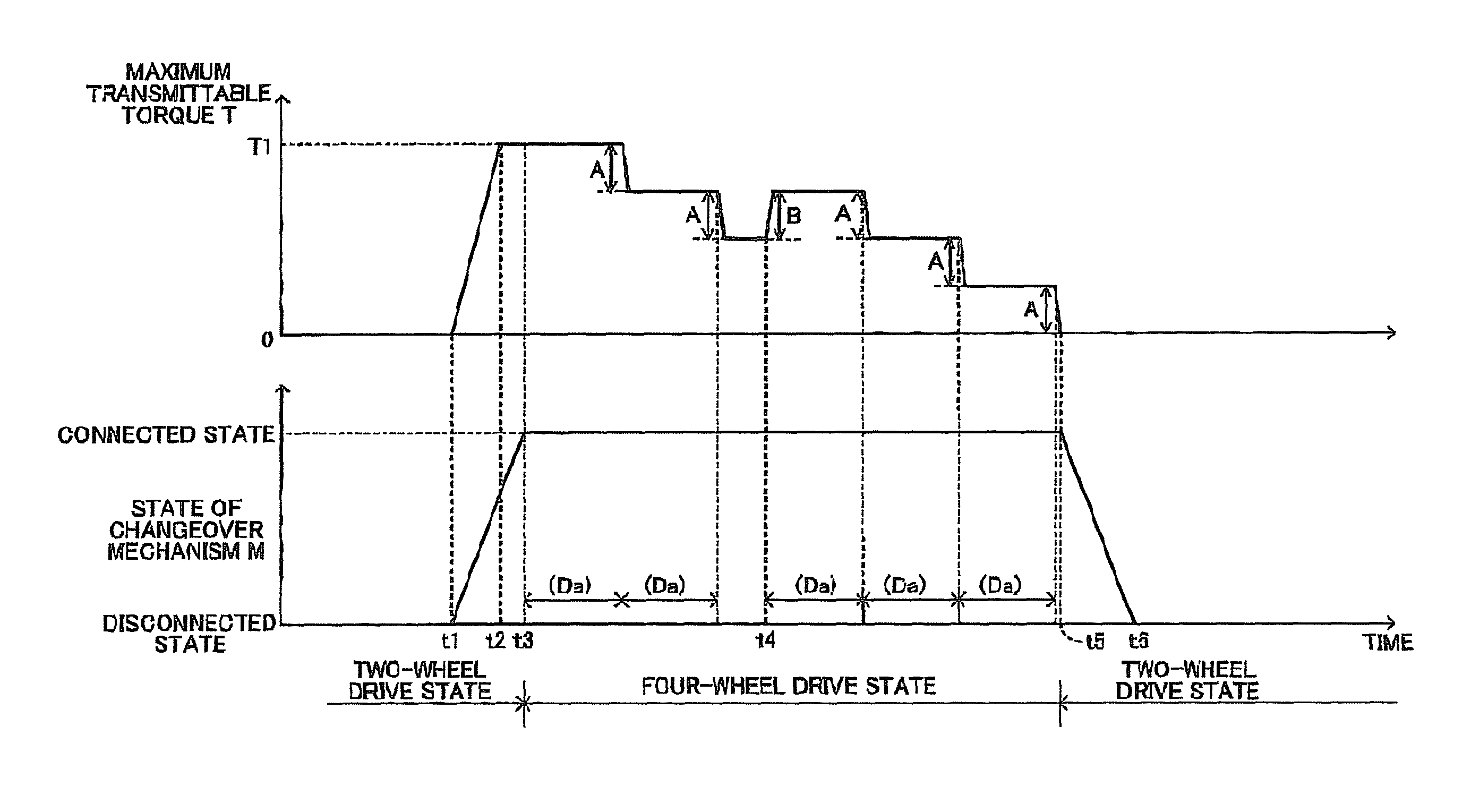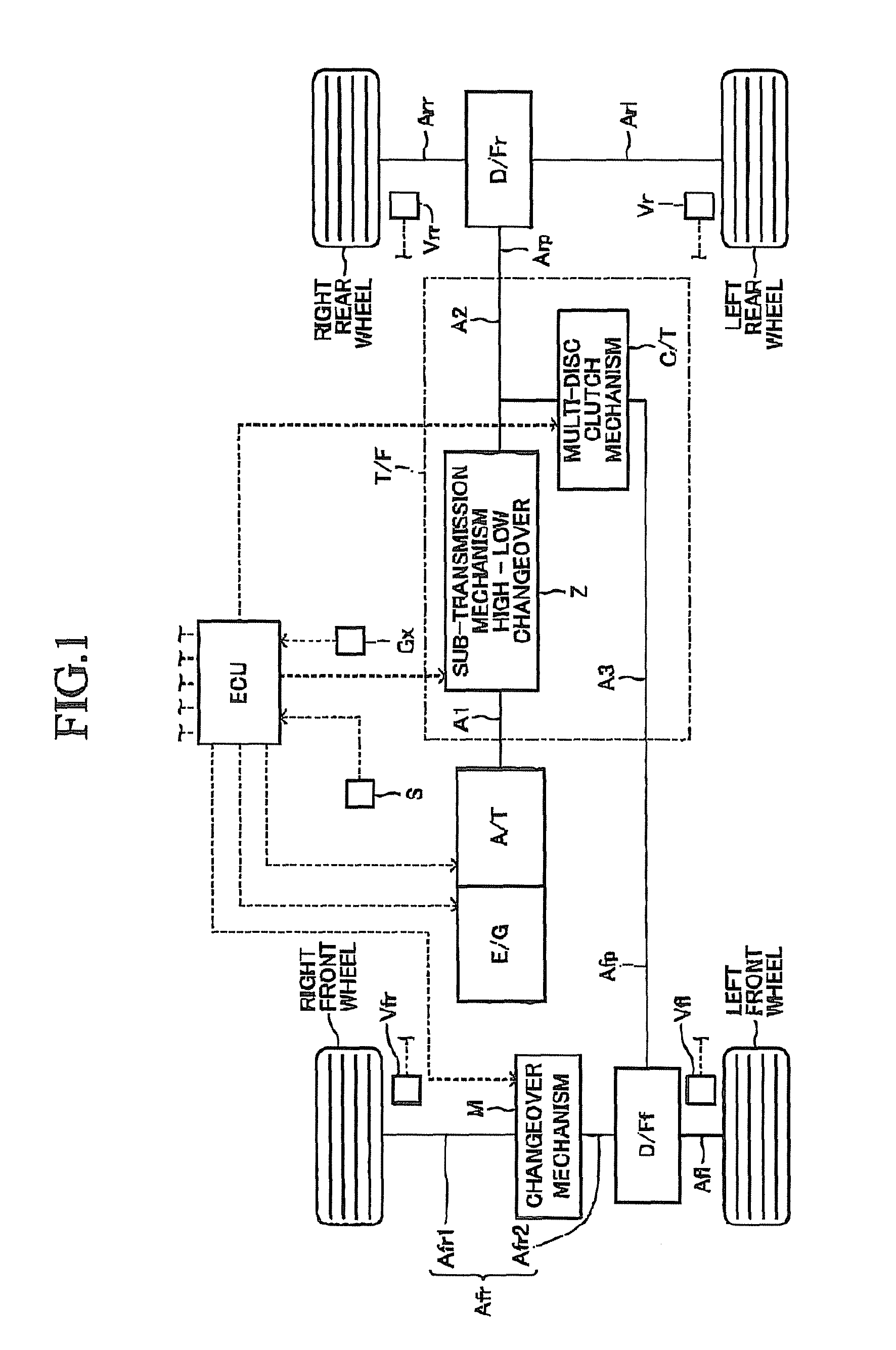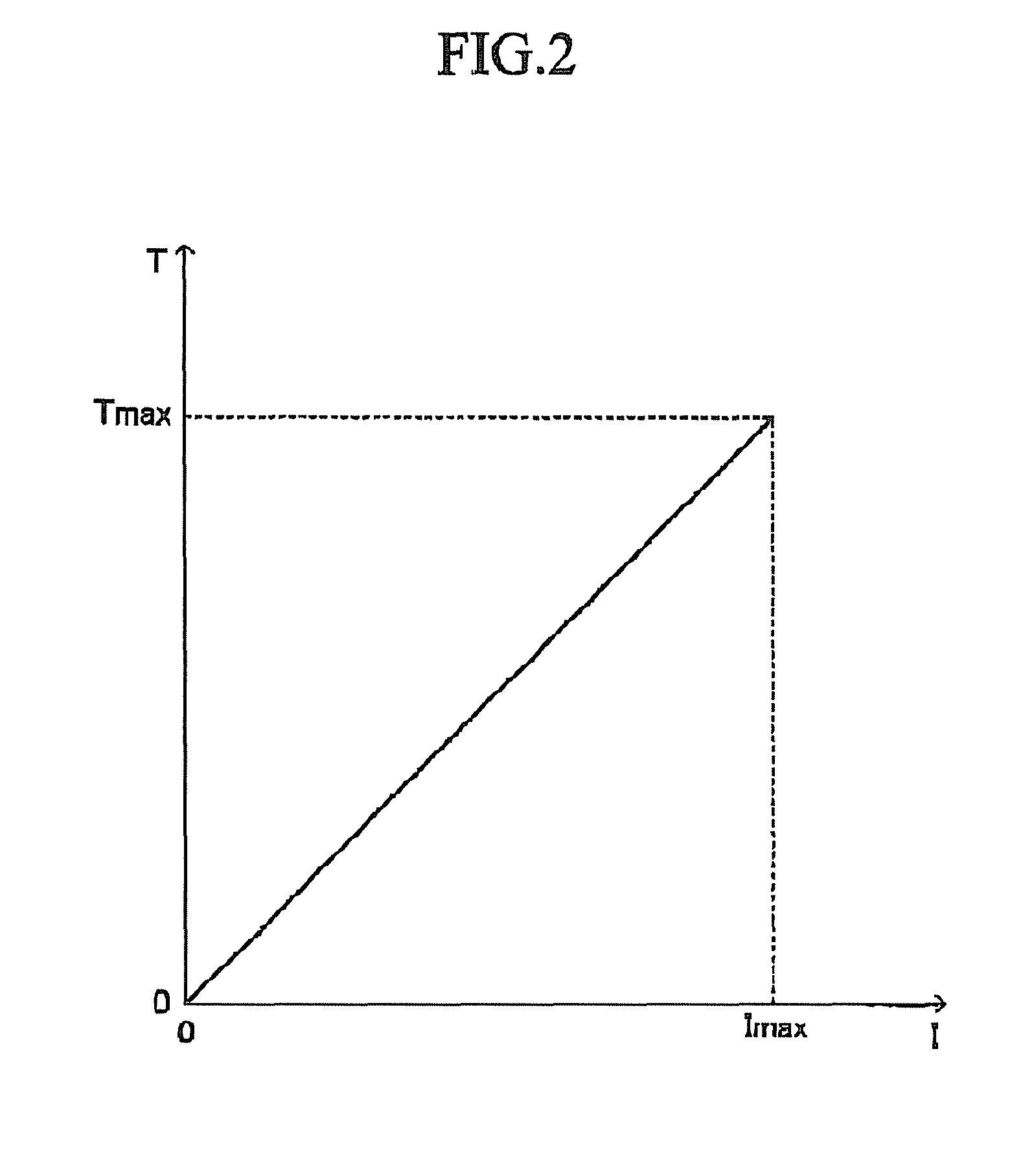Drive state control apparatus for vehicle
a control apparatus and driving state technology, applied in the direction of process and machine control, brake systems, instruments, etc., can solve the problems of reducing and maintaining the clutch drive current at a large value for a relatively long time, so as to reduce the maximum transmittable torque and reduce the wasteful consumption of clutch drive current.
- Summary
- Abstract
- Description
- Claims
- Application Information
AI Technical Summary
Benefits of technology
Problems solved by technology
Method used
Image
Examples
Embodiment Construction
[0033]A vehicular drive state control apparatus according to an embodiment of the present invention (hereinafter also referred to as the “present apparatus”) will now be described with reference to the drawings. FIG. 1 shows the power transmission system of a drive system of a vehicle on which the present apparatus is mounted. This drive system includes a transfer T / F, a rear-wheel-side differential D / Fr, a front-wheel-side differential D / Ff, a changeover mechanism M, wheel speed sensors Vfr, Vfl, Vrr, Vrl, a longitudinal acceleration sensor Gx, a 2WD / 4WD changeover switch S, and an electronic control apparatus ECU.
[0034]The transfer T / F includes an input shaft A1, a first output shaft A2, and a second output shaft A3. The input shaft A1 is connected to an output shaft of an automatic transmission A / T connected to an engine E / G, and a power transmission system is formed between the input shaft A1 and the engine E / G. The first output shaft A2 is connected to the rear-wheel-side diffe...
PUM
 Login to View More
Login to View More Abstract
Description
Claims
Application Information
 Login to View More
Login to View More - R&D
- Intellectual Property
- Life Sciences
- Materials
- Tech Scout
- Unparalleled Data Quality
- Higher Quality Content
- 60% Fewer Hallucinations
Browse by: Latest US Patents, China's latest patents, Technical Efficacy Thesaurus, Application Domain, Technology Topic, Popular Technical Reports.
© 2025 PatSnap. All rights reserved.Legal|Privacy policy|Modern Slavery Act Transparency Statement|Sitemap|About US| Contact US: help@patsnap.com



